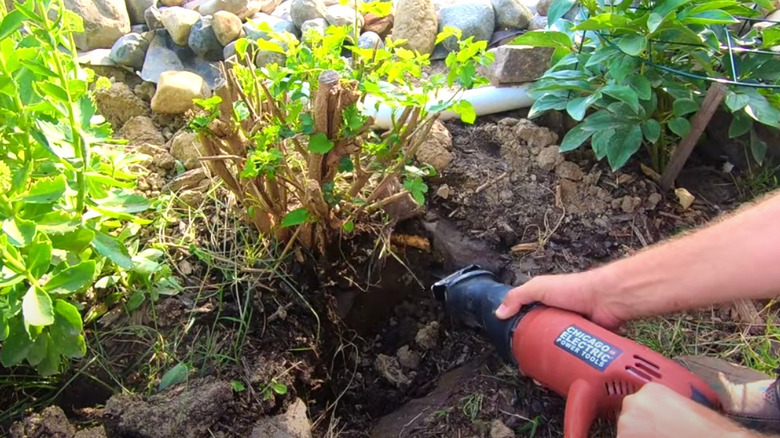Garden Trees, Shrubs & Vines
Kate Nicholson
Gardeners, especially those of us new to the world of plants, don’t always plant the right bushes in the right place. Sometimes, you’re so wowed by a shrub’s attractive foliage, tasty fruit, or stunning flowers you just know will bring drama to your yard that you don’t look closely at its growing habits. What in your mind was a compact hedge is on its way to becoming an enormous tree. You need to dig it out before it takes over your bed, but you don’t want to — or can’t — expend energy digging. No need! Cut the root ball out using a reciprocating saw and save your time and effort for other gardening tasks.
Reciprocating saws, also called Sawzall (a brand name), saber, hognose, or recip saws, are sort of like powered versions of lightweight handsaws. Depending on the type of blade it’s fitted with, the tool will cut through wood, plastic, and even some metals. They’re the go-to tool for DIY enthusiasts because they’re cheap, easy to operate, and get the job done fast. They cut using a straight up-and-down motion and come corded or cordless. For those on a budget, Lowe’s has a BLACK+DECKER 7-Amp Corded Reciprocating Saw for just $55.99. If you prefer premium products, consider the Milwaukee 2520-21XC Cordless Straight Handle Reciprocating Saw Kit at Walmart for $213.90.
How to do it

@Housebarons/YouTube
This method isn’t completely no dig. You’ll need to scoop out one or two shovelfuls of dirt from right around the trunk of your shrub. But that’s all the digging you’ll do … we promise! As soon as you start to see the surface-most roots, stop digging. Before you fire up that reciprocating saw, don a pair of cut-resistant gloves and some protective eyewear. Connect the to the outlet using a waterproof W-A or W extension cord — always a good idea when working with power tools outdoors.
Take your reciprocating saw and push it firmly into the loose soil around the plant. Move the tool back and forth to cut any horizontal roots. If you want to plant shrubs easily in your front yard or elsewhere in your garden, cut a few inches from the trunk to save the root ball. If you plan to compost or discard the plant, cut as close to the trunk as you prefer. Once you’ve circled the bush with your saw, put the tool aside (after switching it off, of course) and feel around in the soil for any still-attached roots. Tackle those individually, then turn the blade on its side and cut the roots extending vertically into the ground underneath the shrub. Now, you should be able to lift the plant out of the ground or use your shovel to leverage it out. This method works for tree stumps, too.




